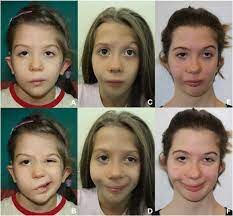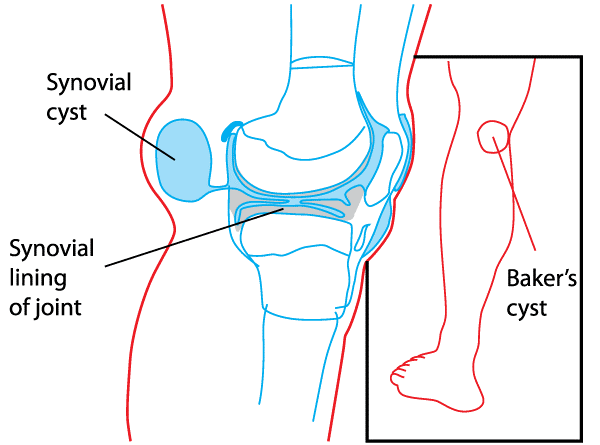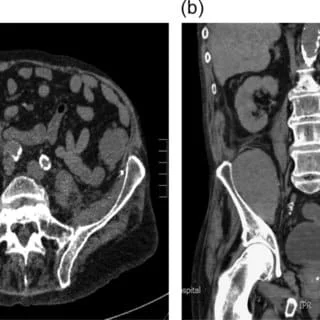Moebius Syndrome
Moebius syndrome is a rare disorder that causes weakness or paralysis of FEW cranial nerves. It is present at birth but does not get worse over time. Signs and symptoms vary widely but frequently include problems with the face, specifically the mouth, and eyes. Several specialists and procedures, like “smile surgery,” may help.
Table of Contents
What is Moebius syndrome?
- Moebius syndrome is an infrequent, congenital (present at birth) neurological disorder.
- It causes weakness or paralysis of a few cranial nerves, which interconnect the brain to the head, neck, and trunk.
- The condition generally affects the 6th cranial nerve (which controls the eyes) and the 7th (which controls facial expression).
- Other nerves are sometimes affected.
- Children with Moebius syndrome frequently have trouble moving their faces.
- For example, they can unable to smile, frown, raise their eyebrows, or close their eyelids.
- The face might droop or appear “mask-like.” They can also have trouble feeding.
- Some babies with Moebius syndrome also have abnormal development in their extremities or chest muscles.
- Moebius syndrome is not progressive, meaning it does not get worse over a period of time.
Who might get Moebius syndrome?
- Researchers have not identified any particular factors that improve a patient’s chances of having Moebius syndrome. It happens in both girls and boys of all ethnicities.
Clinically Relevant Anatomy
- Cranial nerve 6, or the abducens nerve, innervates the ipsilateral lateral rectus muscle which abducts the ipsilateral eye.
- The 6th nerve nucleus is situated in the pons, just ventral to the floor of the 4th ventricle.
- Bilateral palsy of the abducens nerve (as seen in Moebius Syndrome) results in decreased eye movement in the horizontal plane, in the essence, not being able to move the eyes laterally.
- This may be observed by testing lateral tracking of eye movement (keeping the head still) and also when the person reads text, it is apparent that they have to move their head laterally.
- Most people with Moebius Syndrome have bilateral signs, but sometimes it happens on one side only, ie. unilateral.
Mechanism of Injury / Pathological Process
- The causes of Moebius syndrome are not known, but it takes space to be multifactorial.
- There has been proof of a genetic component interconnected to various loci on chromosomes 3, 10, and 13.
- The close relationship embryologically between the motor nuclei of the 6th and 7th cranial nerves explains the pathology of this rare condition.
- Same risk between boys and girls.
- Thought to be an improved risk if one of the parents has Moebius Syndrome.
- MRI investigations show the absence of both the Facial Nerves and the 6th Nerves in person with this diagnosis.
How common is Moebius syndrome?
- Moebius syndrome is very rare. The particular incidence is unknown, but some stated are 2 to 20 cases per million births.
What causes Moebius syndrome?
- Scientists are still finding the causes of Moebius syndrome.
- Sometimes it is connected to mutations in specific genes, but it generally occurs sporadically (no known reason or family link).
What are the symptoms of Moebius syndrome?
The signs and symptoms of Moebius syndrome vary widely, based on which cranial nerves are affected. Physical signs can include:
- Cleft palate (an abnormal opening in the roof of the mouth).
- Crossed eyes (strabismus).
- Deficiency in the hands and feet (clubfoot, webbed fingers, missing fingers or toes).
- Facial paralysis (facial palsy).
- Small chin (micrognathia).
- Small mouth (microstomia).
- A tongue that is short or shaped differently.
- Underdeveloped pectoral (chest) muscles.
- Weak muscle tone (hypotonia).
Mobius syndrome can cause problems with:
- Breathing.
- Closing the eyelids (like blinking or even sleeping).
- Dry eyes.
- Eating (trouble sucking or swallowing).
- Hearing.
- Looking in the same direction by using both eyes.
- Making and keeping eye contact.
- Moving the eyes back and front (side to side, especially outward).
- Puckering the lips.
- Raising the eyebrows.
- Smiling or frowning.
- Speaking.
- Tooth development (missing or crooked teeth).
- Some babies with Moebius syndrome can have developmental delays (like sitting, crawling, or walking later than expected), but most eventually catch up.
- A few studies have recommended that children with Moebius syndrome can be more likely to have autism spectrum disorder.
- But that has not been proven.
How is Moebius syndrome diagnosed?
A doctor diagnoses Moebius syndrome depending on clinical criteria. That means there are no particular tests for the disorder. Diagnosis is based on a doctor’s observing specific symptoms at the time of an examination. To diagnose Mobius syndrome, a baby must have:
- Facial weakness or paralysis that has been present since birth but does not get worse over a period of time.
- Not able to move one or both eyes outward or side to side (but may move the eyes up and down).
- A doctor can conduct tests to find out other causes of facial weakness or paralysis.
Differential Diagnosis
- Abducens (CN VI) nerve palsy
- Congenital facial (CNVII) nerve palsy
- Brainstem syndromes
- Metabolic neuropathy
- Myotonic diseases
- Neuromuscular diseases
- Congenital neuropathies
- Congenital muscular dystrophy
- Duane syndrome
- Kallmann syndrome
- Poland anomaly
- Klippel-Feil anomaly
How is Moebius syndrome treated?
There is no specific treatment for Moebius syndrome, but some treatments may correct or reduce some signs and symptoms. Based on the child’s condition, the pediatrician can refer a person to medical specialists, like:
- Audiologists, who specialize in hearing.
- Dentists.
- Occupational therapists may help the baby perform everyday tasks, for example, holding a spoon.
- Ophthalmologists specialize in the eyes.
- Otolaryngologists’ specifications in the ear, nose, and throat.
- Physical therapists may help the baby move better.
- Speech therapists may help with problems speaking.
- Surgeons involve general surgeons, plastic surgeons, and orthopedic surgeons.
Treatment may involve:
- Contact lenses protect and correct the eyes.
- Eyedrops for lubrication.
- Ponseti method for clubfoot, which inCLUDES a series of casts.
- Splints, braces, and prostheses (artificial body parts) for the extremities.
Surgical treatment
- Correct strabismus.
- Fix tooth spacing or other dental issues.
- Make the eyelids close.
- Move nerve or muscle tissue from one area of the body to another (Identity as a nerve or muscle graft) to promote movement.
- Open and support the airway (known as a tracheostomy) to improve breathing.
- Separate webbed fingers.
- Right now, children with Mobius syndrome have benefitted from “smile surgery,” also known as a “smile operation.”
- At the time of this procedure, a surgeon takes a muscle from the thigh, implants it in the face, and interconnects it with other facial muscles and nerves.
It is helped children achieve:
- Facial movement involves smiling and eating.
- Speech.
- Self-esteem.
- Symmetrical smile.
Physiotherapy Treatment
- The focusing areas requiring physiotherapy intervention are bilateral facial palsy, and also methods to rehabilitate bilateral talipes equines in children with this condition.
- Early in infancy, children with Moebius Syndrome can have a mild motor delay, so pediatric physiotherapists can be able to provide advice on management.
Motor Delay –
- General pediatric physiotherapy interventions may be used to educate the parents on how to help the baby with motor delay.
- It is remarkable that in Moebius Syndrome motor delay, if present at all, is likely to be very mild, so frequently no specific intervention is indicated.
Facial Palsy –
Physiotherapy techniques aimed at improving facial movements are suggested for the majority of people with Moebius Syndrome.
Techniques include:
- Neuromuscular reeducation,
- Trophic Electrical Stimulation,
- EMG biofeedback.
- Many of these babies go on to have surgical interventions as the degree of facial palsy is often severe, and the response to conservative/physiotherapy interventions is often limited.
Talipes Equinas or Clubfoot –
- Physiotherapy interventions are suggested for all children with this condition.
- In some cases, the response to conservative measures can be insufficient, so surgical intervention can be needed.
How can a person prevent Moebius syndrome?
- There is no way to prevent Moebius syndrome.
- Scientists are still studying to understand what causes it and possible risk factors.
FAQ
Introduction Möbius syndrome (MS; VI and VII palsy) is an infrequent disease that in Brazil has great frequency because of the use of misoprostol at the time of pregnancy.
Moebius syndrome may also be connected with a somewhat improved risk of intellectual disability; however, most affected people have normal intelligence. The particular etiology of Moebius syndrome is unknown. Researchers stated that the condition affects 1 in 50,000 to 1 in 500,000 newborn infants.
Although Moebius syndrome is sometimes interconnected with intellectual disabilities like autism, and developmental delays, it particularly affects children of normal intelligence and cognitive development. The name of this disorder is given by German physician Paul Julius Möbius who described the condition in 1888.
There are 4 identified categories of Moebius syndrome: Group I, distinguished by small or absent brain stem nuclei that control the cranial nerves; Group II, distinguished by loss and degeneration of neurons in the facial peripheral nerve; Group III, distinguished by loss and degeneration of neurons and another brain.
With particular medical care, individuals with Moebius syndrome usually have a normal life expectancy.







